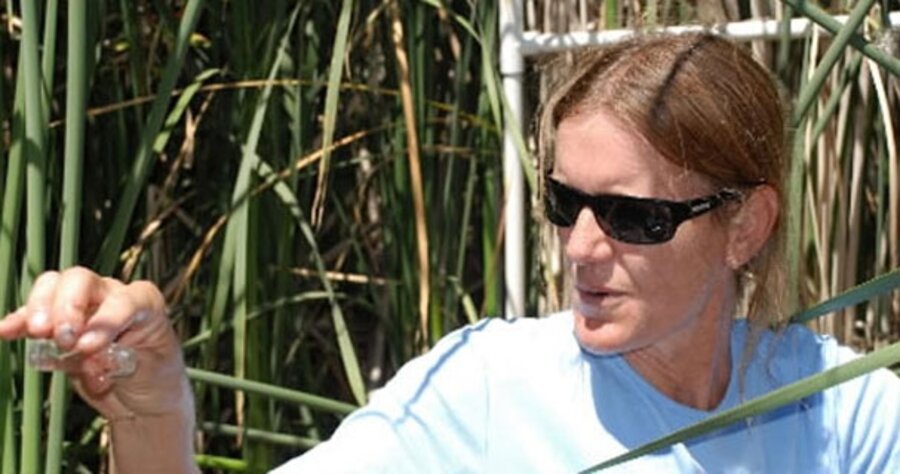Can cattails combat climate change?
Loading...
RIO VISTA, Calif. (AP) — On one side of the gravel road are hundreds of acres of corn. On the other is a different crop that scientists hope will enable farmers to rebuild sinking islands in the Sacramento-San Joaquin Delta, combat global warming and make a profit at the same time.
The U.S. Geological Survey is growing tules and cattails on about 15 acres on Twitchell Island, about 5.7 square miles of rich but fragile peat soil 30 miles south of Sacramento.
Twitchell and other delta islands are slowing sinking, their soil eaten away by wind, rain, and farming. Most are more than 20 feet below the surrounding water. A levee system keeps them from being flooded.
A collapse of the levees would bring in salt water from San Francisco Bay, damaging delta ecosystems and jeopardizing the state and federal programs that pump fresh water out of the delta for farms and cities to the south.
The Geological Survey project started 15 years ago as a small experiment on two 30-foot by 30-foot plots to see if growing mostly tules and cattails would help rebuild the islands’ soil.
The plants can grow high enough to dwarf adults. As they die and decay, they slowly build up the peat. The soil under the 15-acre site has risen 1 to 2 feet since the project was moved there in 1996.
“All that soil out there are plants that grew 6,000 years ago and didn’t decompose completely,” said Robin Miller, a biogeochemist with the Geological Survey. “That’s what peat is. So we’re just making the same thing happen that happened here for millennia.”
About 2-1/2 years ago, scientists noticed that their “big garden,” as Miller calls it, was removing carbon dioxide, one of the greenhouse gases blamed for global warming.
“We were capturing a lot of (carbon dioxide) at levels much greater than other systems — marshes and forests, grasslands,” said Roger Fujii, the project’s director and the bay-delta program chief for the Geological Survey’s California Water Science Center.
That revelation persuaded state and federal officials to expand the project. They are now trying to determine whether the tules and cattails could be used to combat global warming through what they call “carbon-capture” farming.
Under that scenario, companies could meet state greenhouse gas limits by paying delta farmers to plant tules and cattails rather than row crops.
“They can just sit back and watch the tules grow, and they should be making money,” Fujii said. “That’s what the vision is. It’s not to do it just on Twitchell Island. It’s to see if we can do it throughout the delta on subsided land.”
The Sacramento-San Joaquin Delta is at the heart of California’s water delivery system. It’s the meeting place of some of the state’s largest rivers, draining an area stretching from the Cascades in Northern California to the central Sierra Nevada.
The region between the state capital and San Francisco Bay is dotted with dozens of islands, most of them surrounded by narrow canals and many used for farming.
With a three-year, $12.3 million grant from the state Department of Water Resources, the Geological Survey and its research partners at the University of California, Davis plan to move the project to a 300- to 400-acre site somewhere in the delta next year.
The larger size would enable farmers to see how “they could really make a difference,” Fujii said.
A series of questions needs to be answered before scientists can conclude that carbon-capture farming is beneficial. Among them is whether turning cornfields into tule-filled wetlands will only replace one type of greenhouse gas with more of another.
Plowing for agriculture oxidizes the soil, creating “perfect banquet conditions” for microbes that eat the peat and release carbon dioxide, Miller said. Flooding the fields with low levels of water to make wetlands limits the oxygen but forces the microbes to turn to other compounds.
“When oxygen is limited, the bugs, the microbes, have to eat and breathe somehow,” she said. “They will use sulfate, iron or some other compound. Instead of producing (carbon dioxide) at the end of the pathway ... they end up producing methane,” another greenhouse gas.
Scientists also want to be sure that changing cornfields to wetlands won’t increase a third greenhouse gas, nitrous oxide.
They also are trying to determine how to minimize another potential problem — dissolved organic matter, which leaches out of peat soil and plants when exposed to water.
When delta water containing dissolved organic matter is treated for drinking supplies, it forms something called “disinfection byproducts,” compounds that are carcinogenic. Geological Survey scientists want to make sure that creating more wetlands won’t increase levels of those compounds.
They also want to be sure that carbon-capture farming won’t cause the release of mercury that has been washing into the delta from mining operations going back to the Gold Rush era.
If scientists can work out those problems, they hope to develop a manual showing farmers how to create their own carbon-capturing wetlands and keep them healthy.





